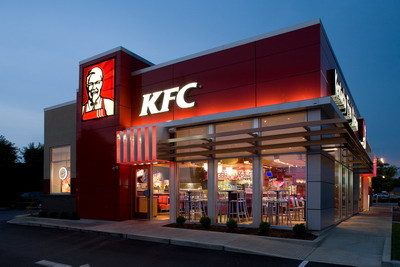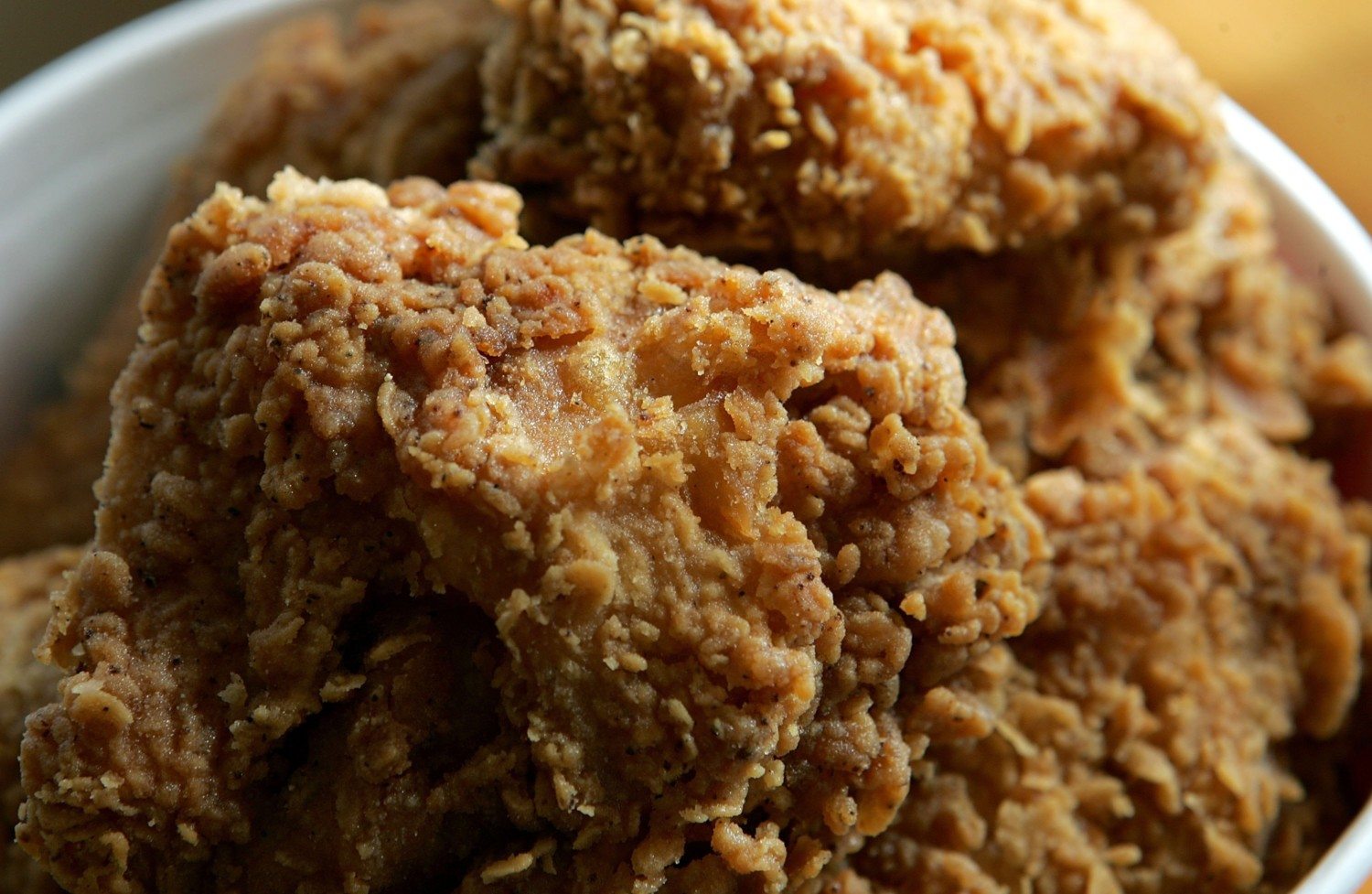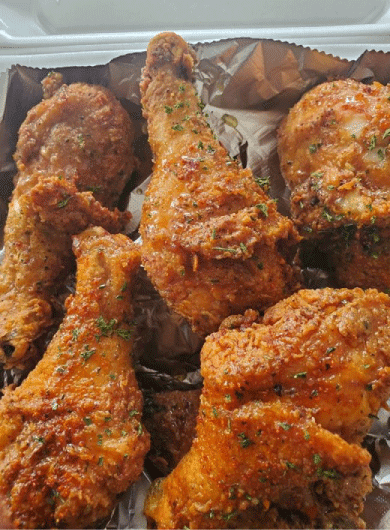

Harman claimed that in his first year of selling "Kentucky Fried Chicken", his restaurant sales more than tripled, with 75 percent of the increase coming from the sale of fried chicken. Sanders adopted the name because it distinguished his product from the deep-fried "Southern fried chicken" product found in restaurants. Anderson, a sign painter from Roy Utah who was hired by Harman, coined the name "Kentucky Fried Chicken". In 1952 he had already successfully franchised his chicken recipe to Pete Harman of South Salt Lake, Utah, the operator of one of the largest restaurants in the city. Independent restaurant owners would pay four cents on each chicken sold as a franchise fee (later increased to five cents), in exchange for Sanders' "secret blend of herbs and spices", his recipe and method, and the right to advertise using his name and likeness. The Sanders Court & Café generally served travelers, so when the route planned in 1955 for Interstate 75 bypassed Corbin, Sanders sold his properties and traveled the US to market his chicken concept to restaurant owners.

His associates went along with the title change, "jokingly at first and then in earnest", according to biographer Josh Ozersky. Īfter being recommissioned as a Kentucky colonel in 1950 by Governor Lawrence Wetherby, Sanders began to dress the part, growing a goatee and wearing a black frock coat (later switching to a white suit), a string tie, and referring to himself as "Colonel". Although he never publicly revealed the recipe, he admitted to the use of salt and pepper, and claimed that the ingredients "stand on everybody's shelf". In July 1940, Sanders finalized what came to be known as his Original Recipe of 11 herbs and spices. The new method reduced production time to be comparable with deep frying, yet, in Sanders' opinion, retained the quality of pan-fried chicken. Sanders bought one and modified it into a pressure fryer, which he then used to prepare chicken. In 1939, the first commercial pressure cookers were released onto the market, predominantly designed for steaming vegetables. On the other hand, if he prepared the chicken in advance of an order, there was sometimes waste at the end of the day. Although a much faster process, in Sanders' opinion it produced dry and crusty chicken that was unevenly cooked. Sanders was dissatisfied with the 35 minutes it took to prepare his chicken in an iron frying pan, but he did not want to deep fry.

In 1937, Sanders expanded his restaurant to 140 seats, and in 1940 purchased a motel across the street, the Sanders Court & Café. By 1936, his business had proved successful enough for him to be given the honorary title of Kentucky colonel by Governor Ruby Laffoon. To improve his skills, Sanders took an eight-week restaurant-management course at the Cornell University School of Hotel Administration. In 1934, Sanders took over the lease of the Pure Oil filling station on the other side of the road, due to its greater visibility for motorists. The chain has expanded to 18,875 outlets across 118 countries and territories, with 4,563 outlets in China alone, KFC's largest market.

Yum! has proven to be a more focused owner than Pepsi, and although KFC's number of outlets has declined in the US, the company has continued to grow in Asia, South America, and Africa. In 1997, PepsiCo spun off its restaurants division as Tricon Global Restaurants, which changed its name to Yum! Brands in 2002. The chain continued to expand overseas, and in 1987 KFC became the first Western restaurant chain to open in China. In the early 1970s, KFC was sold to the spirits distributor Heublein, which was taken over by the R. J. Reynolds food and tobacco conglomerate, which later sold the chain to PepsiCo.
#KENTUCKY FRIED CHICKEN NEAR ME DIRECTIONS SERIES#
Throughout the 1970s and 80s, KFC experienced mixed success domestically, as it went through a series of changes in corporate ownership with little or no experience in the restaurant business. KFC was one of the first fast-food chains to expand internationally, opening outlets in Britain, Mexico, and Jamaica by the mid-1960s. The company's rapid expansion made it too large for Sanders to manage, so in 1964 he sold the company to a group of investors led by John Y. Branding himself "Colonel Sanders", the founder became a prominent figure of American cultural history, and his image remains widely used in KFC advertising. KFC popularized chicken in the fast-food industry, diversifying the market by challenging the established dominance of the hamburger. Sanders identified the potential of restaurant franchising, and the first "Kentucky Fried Chicken" franchise opened in Salt Lake City, Utah, in 1952. KFC (Kentucky Fried Chicken) was founded by Colonel Harland Sanders, an entrepreneur who began selling fried chicken from his roadside restaurant in Corbin, Kentucky, during the Great Depression.


 0 kommentar(er)
0 kommentar(er)
